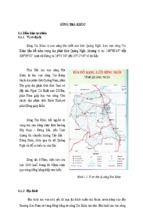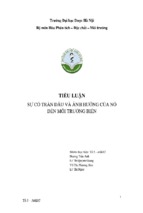Dictionary of
Environmental
Economics
Dictionary of
Environmental
Economics
Anil Markandya,
Renat Perelet,
Pamela Mason
and Tim Taylor
Earthscan Publications Ltd
London and Sterling, VA
First published in the UK and USA in 2001
by Earthscan Publications Ltd
Reprinted 2002
Copyright © Anil Markandya and Renat Perelet, 2001
All rights reserved
ISBN:
1 85383 529 3
Typesetting by Composition & Design Services (www.cdsca.com)
Printed and bound in the UK by Creative Print and Design Wales, Ebbw Vale
Cover design by Richard Reid
For a full list of publications please contact:
Earthscan Publications Ltd
120 Pentonville Road, London, N1 9JN, UK
Tel: +44 (0)20 7278 0433
Fax: +44 (0)20 7278 1142
Email:
[email protected]
http://www.earthscan.co.uk
22883 Quicksilver Drive, Sterling, VA 20166-2012, USA
Earthscan is an editorially independent subsidiary of Kogan Page Ltd and
publishes in association with WWF-UK and the International Institute for
Environment and Development
A catalogue record for this book is available from the British Library
Library of Congress Cataloging-in-Publication Data
Dictionary of environmental economics / Anil Markandya … [et al.].
p. cm.
Includes bibliographical references.
ISBN 1-85383-529-3 (hardcover)
1. Environmental economics – Dictionaries. I. Markandya, Anil, 1945HC79.E5 D53 2001
333.7’03–dc21
This book is printed on elemental chlorine-free paper
00-067275
Contents
List of Figures and Tables
List of Acronyms and Abbreviations
Preface by Anil Markandya
Acknowledgements
The Dictionary
References
vi
vii
xi
xii
1
189
List of Figures and
Tables
Figures
1
2
3
4
5
6
7
8
9
10
11
12
13
Asymptotic Depletion
Budget Constraint
The Circular Economy
The Cobweb Model
The Efficient Level of Pollution
The Causes of Environmental Shirking
Costs and Benefits of Environmental Taxation
The Impact Pathway Approach
An Environmental Kuznets Curve
Market-Based Instruments
Maximum Sustainable Yield
The Potential for No-Regrets Options
Edgeworth Box Showing Pareto Efficiency
14
28
35
41
75
86
88
113
122
129
131
139
147
Tables
1
2
3
4
The FUND Model
Economic Instruments
A Non-Cooperation Pay-Off Matrix
The Prisoners’ Dilemma
39
72
141
153
List of Acronyms and
Abbreviations
AIJ
AONB
APE
APS
BACT
BAT
BATNEEC
BAU
BCA
BEP
BOD
BPEO
BPM
CAA
CAC
CAP
CAS
CATNIP
CBA
CD
CDM
CEA
CEE
CFC
CGE
CH4
CHP
cif
CITES
CO
CO2
COD
COI
CSD
CUA
CVD
CVM
DALY
dB
dB(A)
activities implemented jointly
areas of outstanding natural beauty
assimilative potential of the environment
ambient permit system
best available control technology
best available techniques or technology
best available techniques not entailing excessive cost
business as usual
benefit–cost analysis
best environmental practice
biological oxygen demand
best practicable environmental option
best practicable means
Clean Air Act
command and control regulations
Common Agricultural Policy
country assistance strategy (World Bank)
cheapest available technology not involving prosecution
cost–benefit analysis
Cobb Douglas
clean development mechanism
cost-effectiveness analysis
Central and Eastern Europe
chlorofluorocarbon
computable general equilibrium
methane
combined heat and power
cost, insurance and freight, or charged in full
Convention on International Trade in Endangered Species
of Wild Fauna and Flora
carbon monoxide
carbon dioxide
chemical oxygen demand
cost of illness
Commission on Sustainable Development (United Nations)
cost–utility analysis
countervailing duties
contingent valuation method
disability-adjusted life year
decibels
decibels A scale
List of Acronyms and Abbreviations
DDT
DNS
DO
dr
DSM
EA
EAP
EIA
EIS
EKC
EPA
EPA
EPS
ERICAM
ES
ETS
EU
EU
EuZW
EV
FDA
FCCC
FAO
GATT
GCM
GDI
GDP
GEF
GHG
GMO
GNP
GWP
HDI
HPI
HSI
IEA
IEA
IEP
I–O
IPC
IPM
IPCC
IPPC
IPR
ISEW
IUCN
JI
viii
dichlorodiphenyltrichloroethane
debt-for-nature swap
dissolved oxygen
discount rate
demand side management
environmental assessment
environmental action programme
environmental impact assessment
environmental impact statement
environmental Kuznets curve
Environmental Protection Act (UK)
Environmental Protection Agency (US)
emission permit system
environmental risk internalization through capital
markets
environmental statement
effective temperature sum
European Union
expected utility
Europäische Zeitschrift für Wirtschaftsrecht
expected value
Food and Drug Administration (US)
Framework Convention on Climate Change
Food and Agriculture Organization
General Agreement on Tariffs and Trade
general circulation models
gender-related development index
gross domestic product
Global Environment Facility
greenhouse gas
genetically modified organism
gross national product
global warming potential
human development index
human poverty index
health status index
International Energy Agency
international environmental agreement
intergenerational equity principle
input–output
integrated pollution control
integrated pest management
Intergovernmental Panel on Climate Change
integrated pollution prevention and control
intellectual property rights
index of sustainable economic welfare
World Conservation Union (formerly the International
Union for Conservation of Nature and Natural
Resources)
joint implementation
List of Acronyms and Abbreviations
KP
Leq
MAC
MARPOL
MB
MBI
MC
MDC
MEA
MEW
MNPB
MSY
N2O
NDP
NGO
NH3
NNP
NOAA
NOx
NPV
NSPS
O3
ODA
ODS
OECD
O&M
OP
OVA
PEA
PP
PPP
PRA
PSR
QALY
RA
RACT
RANDP
RM
SARD
SD
SIP
SMS
SNA
SO2
SP
TAC
TCM
Kyoto Protocol
energy mean sound level (a steady-state continuous sound
level with the same energy content as the actual, timevariant, noise level)
maximum allowable concentration
International Convention for the Prevention of Pollution
from Ships
marginal benefit
market-based instrument
marginal cost
marginal damage cost
multilateral environmental agreement
measure of economic welfare
marginal net private benefit
maximum sustainable yield
nitrous oxide
net domestic product
non-governmental organization
ammonia
net national product
US National Oceanic and Atmospheric Administration
nitrogen oxides
net present value
new source performance standard
ozone
official development assistance
ozone-depleting substance
Organisation for Economic Co-operation and Development
operations and maintenance
option price
objective valuation approach
Pareto-efficient allocation
precautionary principle
polluter pays principle or purchasing power parity
participatory rural appraisal
pressure, state, response indicators
quality-adjusted life year
risk assessment
reasonably available control technology
resource-adjusted net domestic product
risk management
sustainable agriculture and rural development
sustainable development
sickness impact profile
safe minimum standards
system of national accounts
sulphur dioxide
stated preference
total allowable catch
travel cost method
ix
List of Acronyms and Abbreviations
TRIPS
TSP
TSS
UDP
UN
UNCED
UNCLOS
UNDP
UNEP
UNESCO
UPP
VLYL
VOCs
VOLY
VOSL
VPF
VPP
WBCSD
WCED
WCS
WRI
WTA
WTO
WTP
WTTERC
XV
YLYL
ZTCM
x
trade-related intellectual property rights
total suspended particulates
total suspended solids
undifferentiated discharge permit
United Nations
United Nations Conference on Environment and
Development
United Nations Convention on the Law of the Sea
United Nations Development Programme
United Nations Environment Programme
United Nations Economic, Social and Cultural
Organization
user pays principle
value of a life year lost
volatile organic compounds
value of life year
value of a statistical life
value of a prevented fatality (formerly VOSL)
victim pays principle
World Business Council for Sustainable Development
World Commission on Environment and Development
World Conservation Strategy
World Resources Institute
willingness to accept
World Trade Organization
willingness to pay
World Tourism and Travel Environment Research Centre
existence value
years of life years lost
zonal travel cost method
Preface
Environmental economics as a discipline is expanding rapidly. With this
expansion, an increasing vocabulary has been developed to explain various
techniques and ideas within the subject area. As a consequence, the need for a
dictionary to explain the terms used has arisen. The definitions provided in
this dictionary aim to give the reader access to some of the more technical
literature that has been produced, as well as a general overview of the main
techniques in the subject area of environmental and resource economics.
For most entries, a reference is given. These references denote a source in
which the term has been used to date in the literature, and can be accessed by
the reader seeking further detail, using the bibliography provided. To aid the
reader in his or her study of environmental economics, a list of commonly used
abbreviations has been included. Where definitions refer to other entries, these
are italicized. Further references to related entries not mentioned explicitly are
given where appropriate.
Our hope is that this dictionary will be a useful resource for the reader in
accessing the literature relating to environmental economics. Definitions are
written so as to be comprehensible to the undergraduate or layman, whilst
including the technical detail necessary to elucidate the key concepts.
A Markandya
University of Bath
Acknowledgements
A number of people have contributed in various ways to the compilation of this
dictionary. In particular, we would like to thank: Adrian Winnett of the
University of Bath for his assistance in writing the definition of enclosure; Ibon
Galarraga for his definition of eco-labelling; Phil Jones for his definition of the
Clarke Tax; Nick Dale, Alistair Hunt and Richard Boyd for assistance in finding
literature; Alina Averchenkova and Ruth Hopper for editorial help; and, finally,
the production team at Earthscan, particularly Jonathan Sinclair Wilson, Nim
Morthy and Sara Bearman, who have shown great patience throughout the
lengthy writing process.
Aa
abatement A decrease in either the level or the intensity of a nuisance, such as
pollution or congestion, or the act of decreasing or eliminating a nuisance.
Pollution abatement in industry, for example, may occur in response to
regulation, consumer demand for cleaner processes, or the diffusion of less
pollution-intensive technology. See also abatement cost; marginal abatement cost;
marginal damage; efficient level of pollution.
abatement cost The cost incurred when reducing (in intensity or absolute
level) a nuisance such as pollution or congestion. The cost per unit of abatement
usually increases as the level of the nuisance approaches zero. See also marginal
abatement cost; marginal damage; efficient level of pollution.
absolute scarcity In contrast to relative scarcity of a resource, which implies
that demand exceeds supply over a given period of time (and which can
apply to any number of resources – man-made capital, natural capital, renewable
and non-renewable resources), absolute scarcity implies that ultimately the supply
of the resource is fixed. Thus, absolute scarcity can occur only with exhaustible
resources such as fossil fuels. See also scarcity.
absorptive capacity Also known as assimilative capacity. The ability of the
environment to assimilate waste products from the economy. Limits to this
capacity may be determined locally, regionally or globally. To the extent that
waste emissions exceed the absorptive capacity of the environment, pollutants
accumulate and damage results. See also safe minimum standards (SMS);
precautionary principle (PP).
acceptability principle The principle that simple and transparent economic
instruments are easily internalized by the existing market and institutional
system. (Turner, Pearce and Bateman, 1994.)
acceptable effluent Acceptable effluent is defined as the effluent discharge
that results in the efficient level of pollution, both in the short and long run.
The efficient level of pollution is the load that minimizes the sum of abatement
costs plus the environmental damage costs.
accommodating technocentrism A less extreme position than cornucopian
technocentrism, accommodating technocentrism maintains that free markets
have beneficial effects on the environment only if individuals think and act in
an environmentally friendly way. Green consumers, investors, citizens and
employees are therefore powerful agents for a green economy. From this
perspective, although the market has an important role to play, some
environmental limits (eg life support functions, maintenance and waste
assimilation capacity maintenance) must be strictly adhered to (and
development activities forgone) if the broader goals of sustainable development
are to be met. (Turner, Pearce and Bateman, 1994.)
acid deposition
acid deposition One of the sources of soil acidification. It involves the
atmospheric deposition of sulphur dioxide (SO2), nitrogen oxides (NOx) and
ammonia (NH3). Acid wet and dry deposition has effects on water, soil and
forests. (Stanners and Bourdeau, 1995.) See also acid rain.
acid rain Atmospheric stocks of sulphur dioxide (SO2) and nitrous oxide (N2O)
accumulate primarily from coal and heavy-oil-fired power generation. As a
result, acid rain occurs through two principal processes. In dry deposition,
particulate matter is physically deposited, subsequently taking acidic form in
conjunction with surface water. The term ‘acid rain’ is therefore something of
a misnomer, as it is not necessarily associated with rain at all. Wet deposition
is characterized by acidic substances, particularly sulphuric and nitric acids,
being formed in the atmosphere, and subsequently being deposited through
rain precipitation or simply movements of moist air. (Perman et al, 1999.) See
also acid deposition.
acoustic quality A measure of noise that takes into account pitch and tone, and
compares this against standards. The findings of many studies undertaken in
European countries on the effects of noise point out that, to ensure a desirable
level of indoor comfort, the outdoor noise level in daytime should not exceed
an energy mean sound level (Leq) of 65dB(A) (OECD, 1991). The maximum
acceptable levels are exceeded in most cities, affecting between 10 and 20 per
cent of inhabitants in Western Europe and up to 50 per cent in some cases in
Central and Eastern Europe. (Stanners and Bourdeau, 1995.) See also annoyance
costing approach; dB(A) costing approach; noise pollution, valuation of.
action programmes European environmental policy has been developed
through the medium of action programmes. These documents establish a
proposed action plan for environmental developments over a period of time,
usually about five years. They form the basis for policy development in the
environmental arena. (Malcolm, 1994.)
activities implemented jointly See joint implementation.
acute toxicity This is present when a short-term exposure to a substance
produces a detrimental effect on the exposed organisms. (Tietenberg, 1992a.)
See also chronic toxicity.
adaptation Adaptation refers to changes in ecological, social or economic
systems in response to changes in conditions. This term is often applied when
discussing climate change issues and includes changes in processes, practices
and structures in order to moderate damages or to yield benefits from potential
opportunities arising from climate change.
There are two reasons why adaptation is important to climate change
strategies. The first is that estimating the impacts of climate change requires
estimates of the extent to which adaptation will reduce the net damage. The
second is that adaptation policy strategies should be developed to minimize
the risks arising from climate change. Adaptation is needed as a policy strategy
since, even with reductions in greenhouse gas emissions, climate change is
expected. For example, climate change is expected to lead to a sea-level rise
resulting in erosion, flooding and saltwater intrusion in coastal areas.
Adaptation here could include the building of sea defences, and will
significantly reduce the costs of climate change. It is important that adaptation
2
administrative charges
to climate change be built into coastal zone management. Another type of
adaptation is the development of crop species that are more tolerant to climatic
variations.
Adaptation policy includes three approaches to managing global change:
1
2
3
blocking, or preventing, unfavourable impacts of such change on any
valuable resources;
adjusting or correcting environmental policy to prevent, or make up for,
welfare losses resulting from global environmental change; and
anticipatory adjustment to strengthen the social systems to lessen losses
from uncontrolled environmental change.
In contrast to adaptation policy, a mitigation policy consists of measures that
reduce, check or delay unwanted effects of global change. (Jepma and
Munasinghe, 1998; IPCC, 1996a.)
adaptive expectation Expectation of the value of an economic parameter,
such as a price, derived by extrapolating the value of the parameter in the
recent past. This would imply that to predict the price of a commodity next
year an adjustment would have to be made to the previous year’s price to
account for recent trends. This method will tend to under- or overestimate a
variable, because it does not take account of information other than past values
that may help to predict future values. In the environmental sphere, predictions
of future prices of resources will be systematically wrong if based on such
expectations. (Bannock, Baxter and Davis, 1991.) See also rational expectation;
static expectation.
adaptive management ‘Sustainable management practices for ecosystems and
species that are responsive to uncertainties and ecological fluctuations, as
well as being reversible and flexible.’ (Barbier et al, 1994.)
adaptive policy See adaptation.
additionality In the context of North–South resource flows, the addition of
new resources to those flows, as opposed to the repackaging of existing flows,
which have now been re-labelled as ‘green’. An example would be assistance
for global environmental problems which has been provided without reducing
official aid for other purposes.
adjoint method See climate change impact assessment – adjoint method.
adjusted income This is a measure of poverty. In contrast to market income,
which is the actual amount of money earnt by an individual or household,
adjusted income includes cash transfers and in-kind transfers, thus providing
a more realistic measure of living standards, particularly for low-income
households.
administrative charges A type of economic instrument. Administrative charges
are intended mainly to finance direct regulatory measures, such as the licensing
and control activities of environmental authorities. The aim is to lay part of
the financial burdens on polluters instead of the general public. In general,
administrative charges are acceptable to firms when kept relatively low;
otherwise they may compromise relationships between authorities and firms
(OECD, 1989a). These charges will be environmentally effective if the revenue
3
aesthetic externalities
improves the performance of the environmental authorities. In practice, they
rarely operate in this way, since the revenues are not added to the budget of
the authorities involved, but to a general budget. In a few cases, administrative
charges such as for the registration of harmful products (chemicals or
pesticides) are intended as a disincentive to their use as well as to raise funds.
(OECD, 1989a.)
aesthetic externalities Visual externalities that include damage to buildings
or unsightly developments, in particular near historic monuments or
wilderness areas. See also aesthetic, historical and cultural resources valuation.
aesthetic, historical and cultural resources valuation Negative impacts
on sites of particular historical or cultural significance sometimes result from
infrastructure construction projects. The loss of scenic resources as the result
of a road-building scheme is one example. Such losses are an important
consideration when attempting to gain the support of those living in the
vicinity of a proposed development area.
It is difficult to quantify the economic value of lost aesthetic, historical or
cultural resources. One technique that may be applied is the contingent valuation
method (CVM). However, for aesthetic resources it is common to use the hedonic
pricing method since, relying as it does on actual consumer behaviour for
data, it is thought to produce more reliable results. See also valuation.
affluence This term is generally used in relation to financial income or wealth.
Some environmentalists measure affluence as the per capita material capital
stock, that is, the physical resources (eg cars, rooms in a house) available for
use. The impact, or throughput of natural resources, caused by affluence is
determined by the material flows required to supply and maintain this material
capital stock. (Meadows et al, 1992.) See also ecological class.
afforestation The establishment of forest cover on land not previously forested.
Afforestation may be necessary, for example, to increase the net capacity of the
Earth’s forests to absorb carbon dioxide (CO2) and other greenhouse gases.
(Mintzer, 1992.) See also deforestation.
Agenda 21 The global sustainable development agenda set out in the Rio
Declaration on Environment and Development, which was established at the
Earth Summit in 1992. Agenda 21 consists of 40 chapters, and at its roots are
27 principles (United Nations, 1993b). There are four broad sections which
cover a range of issues: social and economic dimensions; conservation and
management of resources for development; strengthening the role of major
groups; and implementation. Agenda 21 highlights the importance of national
strategies with international cooperation. It includes proposals for the
integration of environment and development issues in decision making
(Chapter 8) and provisions for international institutional arrangements and
legal mechanisms (Chapters 38 and 19). Agenda 21 is an important document
which has broad support among nations on all aspects of environment related
to social and economic growth. The text of Agenda 21 is online at http://
www.un.org/esa/sustdev.
aggregate abatement information This refers to information about the
average costs of abatement across a group of polluters, often in different
locations. Regulators can use such data in setting pollution charges. Direct
4
agricultural potential and climate change
regulations on the other hand often need more accurate and specific information
at either the standard-setting or standard-enforcing stage. One debate between
pollution charges and direct regulation focuses on the benefits of imposing
charges based on such aggregate information, against imposing direct
regulations on a uniform basis. The advantages of the former are that the
consequences of being somewhat inaccurate are not as severe for the polluter
or the pollution control agency.
The use of aggregate abatement cost data also has an important
institutional consequence. It means that the resources of the opposing sides
will be more equal, with environmental pressure groups having a larger
influence on the final decision than they would have on effluent standard
decisions made in a number of smaller legal jurisdictions. Having a centralized
decision-making body would facilitate the participation of non-industry
engineers and economists in the political process, leading to the implementation
of emissions charges and other economic instruments. (Anderson et al, 1977.) See
also abatement costs.
aggregate demand Total spending on goods and services by all economic
agents in the economy.
aggregate production function Measures the maximum amount of goods
and services that an economy can produce, given its stock of capital, human
resources, natural resources and technology. In conventional economics, it is
common for labour and human-made capital to be the only factors of production
considered. However, environmental economics emphasizes the productive
contribution of land and other natural resources. See also production function
approach.
aggregate supply The total amount of goods and services that producers
choose to provide. This may differ from the maximum they can produce given
their available factors of production for many reasons, one of which is that
demand may be insufficient for this level of supply to be profitable.
aggregation The aggregation of monetary estimates of environmental damages
is an important stage in conducting a cost–benefit analysis (CBA) of a proposed
project or policy. Problems in aggregating damage estimates may occur when
one or more impacts cannot be measured in monetary terms. This is likely to
be the case, for example, when certain ecosystem damages are considered. The
problem may be avoided if individuals are able to establish preferences between
monetized damages and non-monetized damages. In this case a weighting
system can be derived that will produce proxy monetary values for the original
non-monetized damages. Aggregation may also be problematic when
conducted over regions with widely differing income levels, such as when
aggregating global climate change impacts. Alternative weighting systems have
been proposed to deal with this problem.
agricultural potential and climate change There are two main routes by
which climate change can impact upon agricultural potential. One is the shift
in weather patterns that affect agricultural potential, and the consequent shift
of land use and farming types. The other is through changes in yields of crops
and livestock. Changes in potential yield in the core areas of the current food
production regions will have a larger impact on overall production than shifts
5
agricultural runoff
in the potential limits for different types of farming at the margin and on the
outskirts of present agricultural productivity belts. (Parry, 1990.) See also
agroclimatic indices; climate change, estimating costs of; crop-climate models.
agricultural runoff The transfer of fertilizer or agricultural waste by means
of storm water. The washing away of fertilizer is unlikely to benefit the farmer,
unlike the washing away of waste. Damages from runoff are an important
factor in the contamination of water. (Anderson et al, 1977.) See also
eutrophication.
agricultural sustainability The use of agricultural resources in a way that
will at least maintain the living standards of those dependent on agriculture
for the indefinite future. It does not mean the use of physical practices that can
be continued indefinitely. With the few exceptions of countries with stillunexploited reserves of natural resources, there is no alternative to further
intensification of agriculture, until the world population stabilizes in terms of
both numbers and demands. The issue faced by many countries is how and
where to intensify agriculture without depleting the resource base and
degrading the environment.
The United Nations Food and Agriculture Organization (FAO) suggests
that sustainability issues require a new policy approach, including:
•
•
•
The development of a more efficient agricultural production-processingmarketing-consumption system which minimizes waste and pollution
whilst maximizing productivity and incomes.
The reduction of environmental and socio-economic risks and increased
resilience in the use of natural resources in the agricultural process.
The promotion of diversification in agriculture and related sources of
rural income.
Source: FAO, 1995.
There are a number of preconditions to be met to ensure agricultural
sustainability, some of which are external to the agricultural sector. The
implementation of population policies and measures to support agriculture
through adequate financing are two examples of prerequisites that have to be
met before the agricultural sector can be thought to operate in a sustainable
way (op cit). See also sustainability; sustainable development.
agroclimatic indices This is one of two general techniques for examining the
response of agricultural crops to climate change: these involve the measurement
of crop suitability, whereas the others (crop-climate models) provide an estimate
of potential productivity. Agroclimatic indices show the growth of a crop in
response to climatic variables. A variable often used to represent thermal
agroclimate is effective temperature sum (ETS). This usually represents the
summation of temperature during the growing period above some base
temperature assumed to be critical for crop growth.
An index of precipitation effectiveness and of drought is often used for
characterizing moisture aspects of agroclimate. An advantage of these indices
is that they do not demand large quantities of detailed data, and can therefore
be used for large-area geographical assessments of agroclimatic potential.
(Parry, 1990.)
6
allowance
agroforestry A form of intercropping in which annual herbaceous crops are
interspersed with perennial trees or shrubs. The deeper-rooted trees can often
exploit water and nutrients not available to the herbs. The trees may also
provide shade and mulch, while the ground cover of herbs reduces weeds
and erosion. (FAO, 1995.)
air pollutant Any substance in the air that, if sufficiently highly concentrated,
could harm humans, other animals, vegetation or materials. See also air quality
criteria; air quality, modelling of; air quality standards; air quality, valuation of.
air quality, modelling of The modelling of the air quality changes which
result from pollution emissions involves some complicated processes. Many
air quality models have been developed by drawing upon scientific evidence
of dispersion modelling and changes in the ambient environment in response to
changes in air quality. See also air pollutant; air quality criteria; air quality
standards; air quality, valuation of.
air quality, valuation of Changes in air quality can be valued using a number
of techniques, depending on the impacts being measured. One methodology
is suggested in ExternE (1995). The estimation of the damages resulting from
a change in air quality may require the impact pathway approach technique,
whereby the value of a change in quality is estimated on the basis of the health
and other impacts. Dispersion modelling is used to estimate the dose emitted
from a point source to the surrounding area. The dose is then applied to a
dose-response valuation technique to calculate the impacts, and a monetary value
is obtained through the application of such measures as the value of a statistical
life (VOSL). A recent example of the application of this methodology is included
in Markandya and Pavan (1999), in which estimates for health damages
resulting from air pollution estimates were obtained for four European
countries. See also air pollutant; air quality criteria; air quality, modelling of; air
quality standards; point source pollution.
air quality criteria The levels of pollutant concentration and length of exposure
above which adverse health and welfare effects may occur. (Luken, 1990.) See
also air pollutant; air quality, modelling of; air quality standards; air quality, valuation
of; health threshold.
air quality standards The level of pollutant concentrations, prescribed by
regulations, that may not be exceeded during a specified time in a specified
area. (Luken, 1990.) See also air pollutant; air quality criteria; air quality, modelling
of; air quality, valuation of.
allocation of permits see permit allocation.
allowance Allowance in the context of pollution control has essentially the
same meaning as marketable emissions permit, emissions reduction credit and
tradable emissions permit, which have all been used in the literature. The term
‘allowance’ is used to avoid ambiguity and confusion. An allowance is a type
of permit which allows the emission of a pollutant or the use of a resource. An
allowance allocated under this title is a limited authorization to emit a
pollutant, for example sulphur dioxide (SO2), in accordance with the provisions
of the title. The giving of such an allowance does not constitute property right.
That is, the allowance system should not be considered as transferring the
7
alternative cost approach
public’s right to clean air into the right of firms to pollute. (OECD, 1992a.) See
also emissions reduction credit scheme; permits.
alternative cost approach An alternative to the revealed preference and the
stated preference (SP) approaches to the valuation of environmental impacts.
This approach seeks to establish the expenditure which would be required to
remove the negative externality involved, or to reduce it by a specified amount.
This approach has often been used in studies of pollution, and is clearly
appropriate where the expenditure is actually incurred and does completely
remove the externality. Unfortunately, neither of these conditions is often met
in the real world. Turner (1988) gives the example of double-glazing to remove
noise nuisance. He argues that where people are actually willing to pay the
cost of double-glazing, this may lead to an overstatement of the cost of noise to
those individuals. This willingness to pay (WTP) may result partly from the
other benefits of double-glazing such as heat insulation and improved security.
On the other hand, the insulation provided against noise by double-glazing
does not completely obliterate the problem since it is only effective when the
windows are closed and one is inside the building. Finally, the actual payment
given for double-glazing may be much less than the maximum amount the
person would be willing to pay. For all these reasons, we do not even know
the direction of the bias involved in using double-glazing costs as an estimate
of the social cost of noise.
This objective valuation approach is more applicable when environmental
standards are established that reflect the society’s willingness to pay for an
environmental commodity. If it has been decided that set standards of
contamination by pollutants must be attained by all water supply sources,
the cost of meeting the standard represents society’s willingness to pay for
that level of environmental quality. It is a similar case if a project involves loss
of quality to the natural environment, when there is a moratorium on such loss.
In these circumstances a shadow project has to be included in the main project,
which replaces the lost quality of the natural environment by improving other
habitats elsewhere. (Turner, 1988.) See also shadow project method.
alternative development paths Paths that represent an equitable alternative
to the paths typically being experienced by developing countries. The key
features are that: developing countries’ incomes increase; the income gap
between developing and developed countries narrows and ultimately
disappears; and that eventually a stationary state is reached across the whole
world, in which living standards are maintained rather than increased. Such
a development process has many environmental implications. An alternative
development path is consistent with conservation rather than with a
degradation and loss of diverse natural resources. One way to achieve this is to
use the environmental resources more effectively and efficiently. For example,
unique natural resources such as biodiversity provide the foundation on which
developing countries may stake their claim for a fair share of global output.
(Swanson, 1994.) See also sustainable development.
altruism Altruistic value occurs when an individual is concerned about the
wellbeing of others. In the context of environmental economics, altruism can
imply that the value placed on environmental quality is not based solely on
the benefits to the individual. If altruism exists, its value also depends on the
8




















